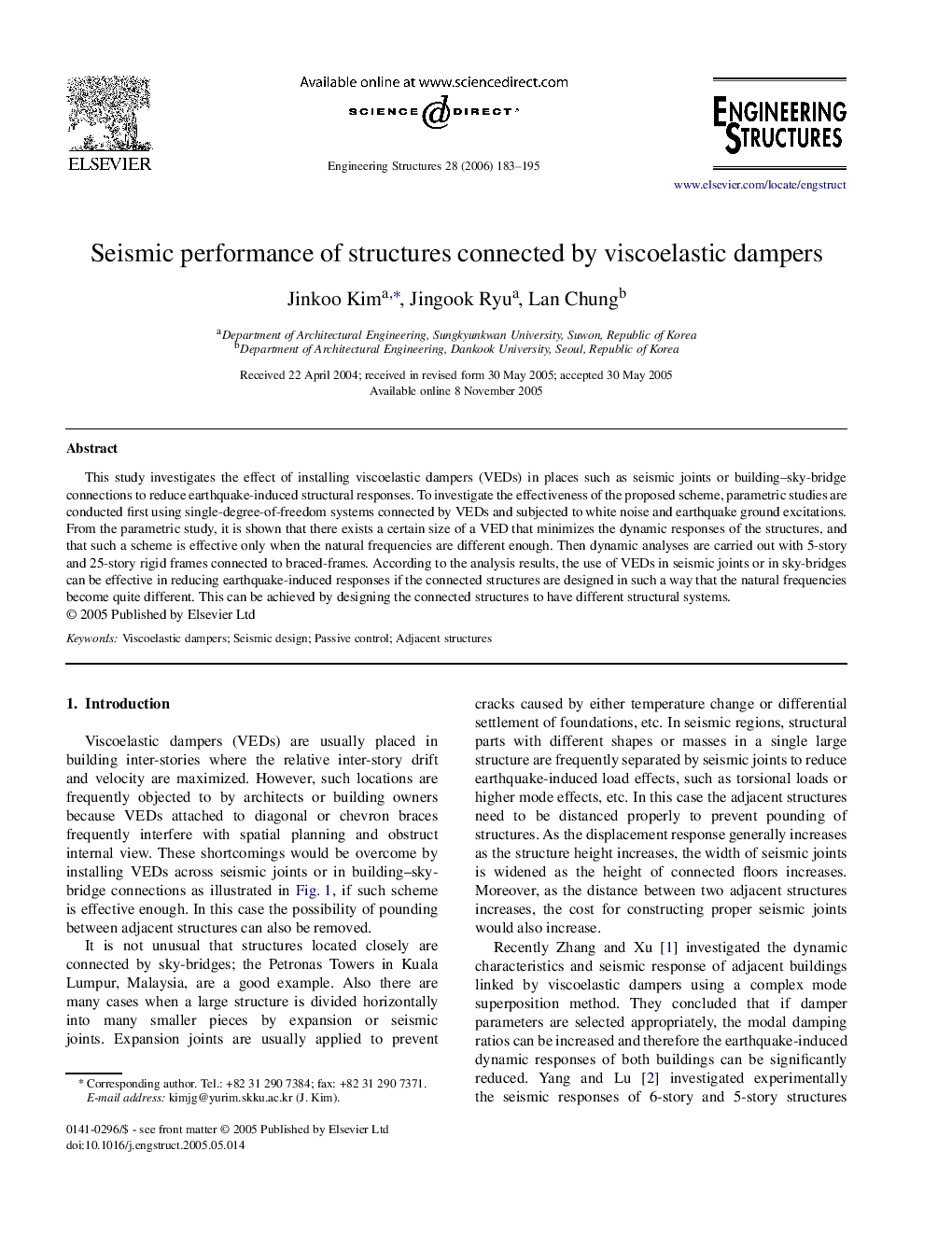| Article ID | Journal | Published Year | Pages | File Type |
|---|---|---|---|---|
| 269648 | Engineering Structures | 2006 | 13 Pages |
This study investigates the effect of installing viscoelastic dampers (VEDs) in places such as seismic joints or building–sky-bridge connections to reduce earthquake-induced structural responses. To investigate the effectiveness of the proposed scheme, parametric studies are conducted first using single-degree-of-freedom systems connected by VEDs and subjected to white noise and earthquake ground excitations. From the parametric study, it is shown that there exists a certain size of a VED that minimizes the dynamic responses of the structures, and that such a scheme is effective only when the natural frequencies are different enough. Then dynamic analyses are carried out with 5-story and 25-story rigid frames connected to braced-frames. According to the analysis results, the use of VEDs in seismic joints or in sky-bridges can be effective in reducing earthquake-induced responses if the connected structures are designed in such a way that the natural frequencies become quite different. This can be achieved by designing the connected structures to have different structural systems.
